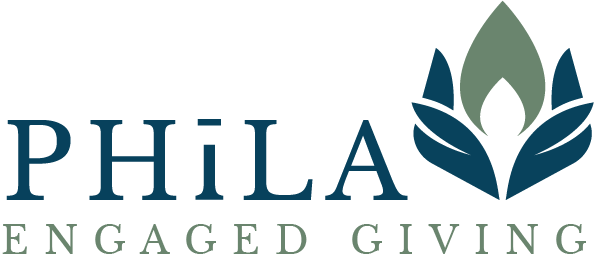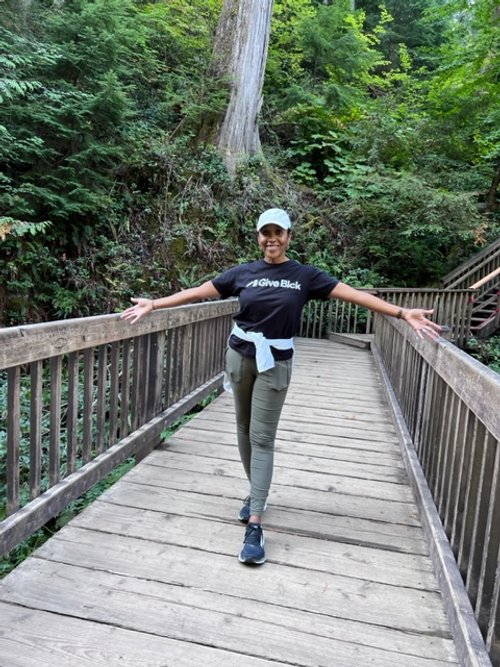Silhouette of woman in sunset standing on a hill. Photo by Michael Bruna.
By Celiz Aguilar McClish
My friend was sharing about her recent health struggles as we were walking along a rocky shore on the Puget Sound. We reflected broadly about who has access to care and wellness in the United States, regardless of income, education level, citizenship status, or geographical location. And as an Organizational Psychology practitioner and former caseworker, I can’t help but consider this question in light of the nonprofit workplace. Who has a right to be well at work?
I unequivocally believe that everyone has a right to be well at work. And while every sector has its share of challenges supporting employee well-being, there is a special imperative for philanthropy to prioritize broadly funding wellness within the nonprofit sector.
Well-Being and Work
The Center for Effective Philanthropy defines well-being as “as the state of employees’ mental and physical health” and notes that it is influenced by workplace culture and opportunities for growth. Similarly, the field of Organizational Psychology advocates for Decent Work, which is work that provides fair wages, job security, and opportunities for personal growth. When employees are well and can engage in decent work, they are more likely to meaningfully contribute and have longer tenures.
However, the reality for many nonprofit organizations is that their workforce is underpaid, overwhelmed, and understaffed. In a recent report by the National Council of Nonprofits, 74% of nonprofits surveyed reported job vacancies, with public-facing positions experiencing the most vacancies. And at least half of respondents identified that stress and burnout is a top factor impacting their ability to recruit and retain top talent across all levels of the organization.
In a study of nonprofit CEOs, The Chronicle of Philanthropy found that, while CEOs love their jobs, the challenges of retaining strong talent, balancing work and life, and fundraising can be too much to bear. One-third of CEOs surveyed said they are likely to leave their position within two years. This doesn’t even begin to scratch the surface of the additional burdens BIPOC leaders face. (See: Women Leaders of Color Are Exhausted. Philanthropy Needs to Step Up). But perhaps most concerningly, the Center for Effective Philanthropy found that 75% of leaders surveyed believe that staff burnout impacts their ability to impact and serve communities.
Impact to Community
When nonprofits are understaffed and employees are overworked, programs and vital services for the public are significantly impacted. Specifically, “there are longer waiting lists, reduced services, and sometimes elimination of services,” which can have far-reaching effects on communities and individuals. For example, a delay in housing services could result in a period of homelessness for a client.
There is also a significant loss of institutional knowledge and shared history when turnover is high. While a challenge in any sector, it can slow progress in a highly-relational, resource-strapped field like the nonprofit sector. I experienced this first-hand as a caseworker for refugees and immigrants when colleagues—who had worked for years to build trust with key community members—left positions and, as a result, took relational knowledge with them.
Hopeful Paths Forward: Unrestricted Gifts and Wellness Funds
If the problem seems bleak, the opportunities for creating change should inspire. Philanthropy is uniquely positioned to be a partner in creating systemic social change by strengthening organizations and their wellbeing. While there are a myriad of ways that this can happen, we at Phīla recommend unrestricted giving and dedicating funding specifically toward wellness. Both of these giving mechanisms demonstrate trust in the organization and offer much-needed support beyond what is offered through traditional grants.
Unrestricted giving, a tenant of Trust-Based Philanthropy, allows the grantee to determine where funding is most needed. Grantees may put funding towards building repairs, programming, or salary increases—which are necessary to attracting and retaining staff given that three-out-of-four nonprofits stated that salary competition impacts their staff retention.
A Phīla client recently supported a nonprofit with an unrestricted gift, reinforcing that the grantee could use the funds as they saw fit. The grantee later shared the impact with us:
Thank you so much to the [redacted] Family Fund. WE raise our hands up to you all for helping us with our work and giving us your blessing to use it where it is needed most.
One leader also provided this feedback:
You know it is the first time in years that I have felt like I have room to breathe. Knowing when to take a vacation is not easy in the nonprofit world and I think yesterday was my first real day off in a long time. Thank you all for helping with this necessary day of self-care and healing.
Clearly, unrestricted giving can provide a welcome reprieve for hardworking staff.
Philanthropists can also engage in funding wellness, which can take on a variety of forms. By strategically funding rest and wellness initiatives, philanthropists can support the longevity and well-being of the nonprofit staff, thereby supporting communities and individuals with better services.
The Share Fund, a philanthropy supported by Phīla, has an Opportunity Fund that is designated to “benefit the health, aspirations and broader well-being” of the grantee’s employees and is entirely separate from unrestricted funds for general operating expenses. Grantees can spend funding on coaching, professional development opportunities, childcare, fitness classes, or even a trip like one nonprofit used as a way to thank their home health aids. There are so many ways to fund restoration.
When employees are invested in and are equipped to thrive at work, they can engage and contribute meaningfully to their organizations. And what better sector to invest in employee well-being than one that provides vital (read: life-saving, poverty-alleviating, hunger-reducing) services to communities?
In a perfect world, nonprofits wouldn’t need to exist because communities would be self-sufficient and could meet their own needs. But until that day comes, we invite you to strengthen communities by strategically supporting the organizations that serve them.
Resource: Additional Organizations Funding Wellness
The Boston Foundation partnered with New Sector Alliance to offer a Leadership Longevity Fellowship to strategically invest in the professional development and wellness of mid-career nonprofit managers.
Allstate Foundation offers free leadership development to nonprofit leaders and staff. The foundation also awarded nearly $400,000 in grants for wellness initiatives.
The Skillman Foundation has the Well Fund which supports the “wellness and capacity of BIPOC-led nonprofits” serving youth in the Detroit area. Awards support general operating funds, leadership development, and wellness activities.
The Seattle Foundation launched the Black-led Joy and Wellness-Fund to combat some of the funding inequities that Black-led organizations face. The fund focuses on supporting the “physical, mental, and emotional well-being of staff at Black-led organizations.”
Inspired by conversations with grantee partners, the Imago Dei fund created the Keep the Spark Alive program to combat exhaustion and revive leaders. The program was created to be as “non-burdensome as possible” with rolling applications, quick approvals, and minimal reporting requirements.












